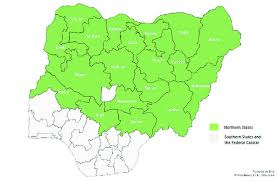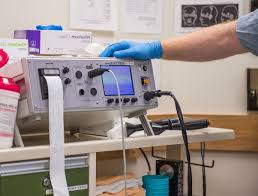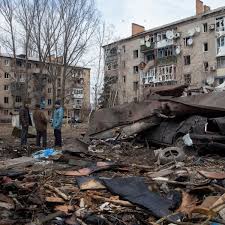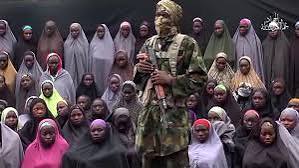*AVERTING A LOOMING ANARCHY IN THE NORTH: 12 POORLY UTILISED OPPORTUNITIES AND 8 INSIDIOUS DANGERS, IN ROUGH MAGNITUDES

Averting looming danger in the North: The threats and the opportunities
By A. G. Abubakar
For decades, the headlines and “word-of- mouth” kept screaming about the growing insecurity and deprivation in the North with greater frequency and intensity. However, the first instinct of some less discerning individuals was to dismiss such as propaganda or conspiracy against the region. The stark reality has now become too apparent. It is an open secret that the Northern Region of the country is grappling with existential challenges ranging from insecurity, high incidence of poverty to fractured unity.
Challenges that have literally compromised the region’s internal fabrics, with high spill over possibilities. As a matter of urgency, the sanctity of life and security of property, should be enforced to forestall the complete breakdown of peace and order. The Federal government should lead the revival process before it is too late. The North must be rescued if the Nigeria should survive. The opportunities, past and present, are there to be brought to bear.
The Opportunities in no Particular Order;
1. Massive Land Mass: The North occupies over 74 % of Nigeria’s landmass of 923.7 thousand square kilometres that spread across the Sub-Saharan Sahel, the savannah grassland and woodland zones. Zones that support the cultivation of both cash and food crops. Same for livestock and fishery production.
2. Huge Population: Deriving from the 2006 census figure of 140 million, the projected Nigeria population in 2023 was 220 million people. Northern Nigeria accounts for about 51% (112.2million). A figure more than the combined population of Ghana, Cameroon, Mali and Ivory Coast put together. This represents a huge market capable or of supporting varied range of industrial ventures. Above all the region is enormously endowed with solid mineral resources and even crude oil.
3. Elaborate Administrative Setup: Nineteen states currently constitute the North. Nineteen governors call the shots along with nineteen Assemblies to collectively undertake the developmental needs of the people. It’s like bringing governance closer to the people. No defunct region in Nigeria has this elaborate number of sub polities.
4. Highly Productive Agricultural Land: Seventy percent of the 70 million hectares of agricultural land is domiciled in the North according to the Food and Agricultural Organisation (FAO,2022). Agriculture as it were is the mainstay of the Nigerian economy employing 70% of the labour force and also contributing 30-35% (average) to the national GDP annually (A Brief History Of the ACF, 2010). The FAO also credited Nigeria with being the world’s largest, (number 1) producer of yam, cowpea, cassava, sorghum, peanut and millet (4th), sesame (4th), maize (14th) and tomato 14th.The region actually used to be the nation’s foremost Agro allied industrial hub of the nation. Revenue contribution from the Northern agricultural sector to then Federal government was said to be largely instrumental in developing the nation’s oil industry. Records from the Colonial Administration showed that between 1914 to the dawn of independence in 1960, the Northern Provinces contributed more than twice their Southern counterpart Provinces to tie national revenue.
The said contribution totalled about £18 million compared with about £8m (ACF, pp 203, 2010) on the strength of agriculture and solid minerals. Incidentally, that was during the period which oil exploration in the South was being funded in earnest, preceeding the oil boom era of 1960-70.
5. Iconic Rivers: Two great rivers, Niger and Benue and 7 out of 12 river basins namely Lower Niger, Upper Niger, Lower Benue, Upper Benue, Sokoto-Rima, Hadeja-Jamaare, and the Lake Chad, traversed the region supporting farming and fishing all year round. Same with dry season farming along the river banks, tributaries and associated dams like the Tiga, Alau, Biu (abandoned for long), Dadin Kowa, Gubi, Bakalori, Challawa, Tiga etc, facilitating massive vegetable and fruits cultivation.
6. Great Lake: One of the largest inland water bodies in Africa, the Lake Chad has a substantial part of it belonging to Nigeria. Under the moribund Lake Chad Basin Development Authority (CBDA), Nigeria became one of largest producers of wheat and rice. The lake equally supported fishery that made the “Maiduguri fish” (banda) a premium product locally and internationally. At its height the Lake Chad covers 1,350 sq kms of water. And during the 80s the Basin’s wheat production averaged 10,000 tons according to records. Kano, Jigawa, Sokoto and Kebbi also have the same potential.
7. Extentive Boarder Economy: The North shares international boarders with 4 countries namely; Cameroon, Chad, Niger and Benin Republics with huge potential for cross-boarder trade. Being an agriculturally rich region, the North has been a major exporter of food, textiles and precious stones (gold) to some East/Central African countries and the Middle East. Gold and gemstones mined in parts of the North (Zamfara, Mambila (Taraba), Gunda (Borno) etc) are being exported to Europe and even China.
8. Massive Livestock Base: Raising livestock is only second to arable farming in Northern Nigeria. With large population of nomad’s the livestock sector remains the major producer of meat and hides. Together, with the rearing of domestic animals like sheep, goats, pigs, etc the region has been responsible for the nation’s self sufficiency in animal protein. Of the over 156 million cattle in Nigeria, 90 % are raised by pastoralists in the North. According to FAO in Nigeria, 69% of households in North Western Nigeria, raise domestic animals.
9. Enormous History of Greatness: Though ethnically diverse the North as a whole has enormous history of running empires and political organisations. The popular ones being the Nok culture, Kwararrafa empire, the Kanem-Borno and the various Hausa City states. The Kwararrafa, Kanem-Borno and the 18th Sokoto Caliphate stood out as bastion of statesmanship and scholarship to draw inspiration from.
10. National Defence and Security Hub: Northern Nigeria has been home to the largest military, police and allied security installations in the county. It houses the NDA (Kaduna) Staff College (Jaji-Kaduna) Ministry School (Zaria) Police Academy (Wudil-Kano) Police Colleges (Kaduna, Jos and Maiduguri etc) Prison (Correctional) Training School (Kaduna), Nigeria Airforce Command Schools (Jos & Kaduna) Airforce Training Base School (Kaduna, Makurdi) NIPSS (Kuru-Jos) National Defence College (Abuja), Nigeria Army University, Biu, and the Airforce University in Bauchi state among others.
11. Occupied The Seat Of Power The Most: The North produced 10 out of the 15 leaders that ruled Nigeria for about 48 years out of 63 years viz, Balewa 6, Gowon 9, Murtala 1, Shagari 4, Buhari (1) 3, Abacha 6, Abdussalami 1, Yar’adua 2, Buhari (2) 8, approximately. The security architecture of the nation comprising the Military, Police, Intelligence and related services were largely dominated by the North.
12. Seat of the National Capital: Abuja, the national capital, is located in the North. Aside providing easy access to the seat of government, the city offers great opportunities for Northerners. People who ordinarily would find it difficult to travel to Lagos, the former capital. Befitting infrastructure too has followed the City just as more are developed aside impacting neighbouring States of Kogi, Niger,Kaduna, Nasarawa positively.
How has the North fared socioeconomic wise so far? The answer is, not far, going by the region’s development indices. Indices like poverty, unemployment, financial muscle, access to western education and health care, security and peace etc. So sad the economic disposition of the region shows that the 2020/21 internally generated revenue (IGR) of Lagos state figure of N418.950 billion surpassed the combined total N385.182 for the 19 states in the North!
The Insidious Challenges/Triggers.
1. Rising Dehumanising Poverty: In the year 2022 the National Bureau of Statistics (NBS) gave the national poverty figure of 65% while the World Bank in indicated a lesser one. Going by the rule of thumb the NBS survey looks more credible. The NBS rate translated into 133 million Nigerians living in multidimensional poverty using the estimated national population figure as at the time, the North is home to 65%.
Eight (8) Northern States constitute the top 10. Bayelsa and Ebonyi completed the number. In numerical terms 65% (86m) of 133 are living in the North, spread across Sokoto 90.5%, Gombe 86.2% Jigawa 84.3%, Plateau 84.0%, Yobe 83.5%, Jebbi 82.2%, Taraba 79.4% and Zamfara 78.0%. The average for this group stood at 93.25%; a disposition that is almost similar to what obtains in the remaining states, notwithstanding the enormous resource endowments and the existence of many dollar-based multimillionaires/ billionaires (Forbes list) in the North. As things are, it would seem, the North has become the face of material poverty in Nigeria.
2. Scary Level of Youth Unemployment: In 2022, the NBS during the FG inauguration of a “Technical Committee on Youth Unemployment and Skills Development” put the rate of youth joblessness at 53.4%. Northern youth were in majority by almost 70%. For, earlier in 2020 the statistics showed 8 Northern States made the top 10 facing joblessness crisis. They include Benue Zamfara, Jigawa, Taraba, Gombe, Kebbi, Nasarawa and Bauchi. The southern states of Ebonyi and Bayelsa completed the number.
The army of the jobless youth are therefore largely Northerners with attended problems of restiveness and disillusionment.
The North must have certainly influenced the ranking of Nigeria low on the globally acknowledged Hanke’s Misery Index, 2020 computed on the unemployment and poverty levels among others. Nigeria placed 19th among the top twenty miserable countries of the World.
3. BreedingThe Next Generation of The Poor: Of the estimated 10.5 primary school-going age, over 70 % is in the northern states, especially the NE and NW zones. A lot of those who do attend equally drop out along the way bringing net completion to 53% for boys and 47% for girls according to UNICEF in 2020. Dropping out of school at this vulnerable age tend to render the youth veritable tools for mischief and national insecurity. No thanks to cultural and religious factors, endemic poverty and enlightenment challenges.
The “clash of cultures” between Western education and inclination towards Islamic education is something yet to be resolved in parts of the North with far reaching negative consequences on peace and development in the region.
4. Growing Army of Poorly “Schooled” Preachers: The poorly moderated open religious preaching and sermons continues to undermine peace and harmony in the North. A lot of Muslim Clerics are ill equipped in the art and methodology of theological sermon.
Some simply lack exposure and capacity, they therefore resort to inflammatory sermons or supporting the mundane just to be noticed. Else, how could some of them undertake the holy Pilgrimage to the Holy land (s), where begging was non-existent but return home to preach the virtues of same, as if those over there were less knowledgeable? The same group could also have been uniformed security agents manning holy sites/places, yet they come home to discourage enlistment into uniform outfits.
Many too, are enamoured by how portable and organised Middle East families are. A kind of family set up done with parental guidance as prescribed by the religion. Commendable as it is, the Nigerian cleric would still promote unbridled procreation even when the caring capacity as obligated is absent. Not even emulating the Prophet’s virtues of hard work and self help) as he mends his clothes, cleans his environment, helps his spouses, plays with his kids, practices commerce, lead wars etc, according to various authentic ahadith. The late Sardauna Ahmadu Bello also addressed the virtues of hard work in his book “Work and Worship”. The examples set by the Prophet of Islam and the call by the revered Sardauna do not seem to have made an impression on the Muslim North any longer.
5. Dwindling Financial Inclusion And Investment Capacity: There are about 33 major commercial banks currently operating in Nigeria. The top 10 includes, Access, FCMB, FBN, Fidelity, Zenith, Polaris, Union and UBA. The North doesn’t own any except may be the Polaris which is also under some reconsideration. The other with northern tilt is the budding Ja’iz bank. In all these financial institutions northern investors may have substantial equities but not up to management control level. A similar scenario obtains in the insurance sector where the only, northern Leadway, still stands. The negative consequences on the Northern economy are certainly too obvious.
6. Growing Too Little Future Manpower: The current number of universities in Nigeria according to the NUC is 264. They comprise federal, state and private ones. of this number, about 114 are located in the North; less than 50%. Some of them in the North are actually owned by persons outside the region. Sizes of enrolments too follow ownership patterns, which put Northern candidates at disadvantage. This may not be unconnected to the number of applicants who normally qualify from the region seeking admissions.
7. Token Presence in Competitive Activities: In sports, especially soccer Northern youth are marginally involved despite the fact that the game has large following in the region. With a population of about 130 million the North has more than the combined figures of Cameroon 27m, Ghana 33m, Mali 22, Ivory Coast 22, Senegal 17, Cape Verde .5m and Guinea Bisau 2million. They are all great footballing nations, some appearing in FIFA World Cup, a couple of times. Northern Nigerian players hardly get reasonably included in Nigeria’s national teams. Out of the 22 players, not more than 4 or 5 have been part of successive squads due maybe to poor sports development in the region.
8. A Growing Killing Field Where Life Means Nothing: The myriads of socioeconomic challenges facing the North has invariably rendered the region vulnerable to all sorts of crisis from Islamic insurgency, armed banditry, terrorism and industry-level kidnappings for ransom. The epicentre of the insecurities strangely nabla (inverted triangle) in dimensions. Borno/Yobe on the NE, Sokoto/Zamfara far NW and at the vector, Plateau/Benue in the NC region. The North is literally locked completely in wanton destruction of lives and properties, needlessly. In Plateau State according to the government’s Peace Building Agency over 70 social convulsions including violent crisis took place in the state between 1994-2021, consuming thousands of innocent lives. The Boko Haram/ISWAP in the NE, is estimated to have killed over 30,000 and displaced over 2 million people. Containing the insurgency too, has cost the government over N6 trillion six years back according to the Institute of Security Studies (ISS,2017). And will take more than that to rebuild the region. Besides the insurgency is still not abating in the North East. States on the North Western flank have been in grip of deadly armed banditry and abductions for more than a decade now.
Parts of Katsina, Zamfara, Sokoto and Kebbi have been under terrorist’s control. In Zamfara alone more than 3,000 souls have been lost to the crisis and 300,000 internally displaced according to former governor Abubakar Yari. A recent UN report on “Mapping the potentials of transitional Justice in Katsina State” identified 24 terrorists’ cells, housing 2,295 bandits that have been running campaign terror with impunity across the state. Similar scenarios obtain in neighbouring Zamfara, Kebbi, Sokoto and Kaduna states. The North is under existential challenge and something needs to be done urgently to forestall imminent anarchy.
A Clarion Call on President Tinubu.
The Federal government under PBAT as a matter of urgency should facilitate the convention of a “Security and Economic Summit for the Northern Region” under the auspices of the Northern Governors Forum (NGF), the Arewa Consultative Forum (ACF), Northern Elders Forum (NEF), The Arewa, the Security Agencies and other interest groups. Attendance by old and serving State Governors, Ministers, Captains of Industry, Northern intellectuals/academics, top politicians, the Clergy, and youth leaders of Northern extraction should be made near compulsory. The Governors should have no excuse. Their deputies should man the tuff for the few days. The Summit should be tasked with the development of a realistic and time bound “Roadmap to Rescue the North” before she pulls the entire nation down.



